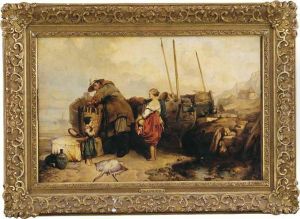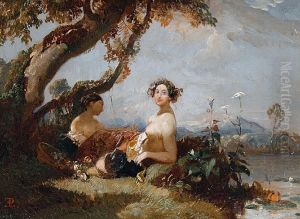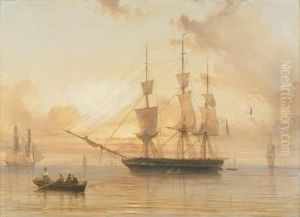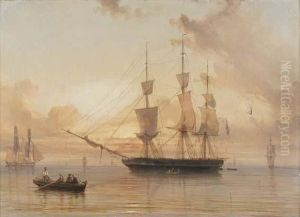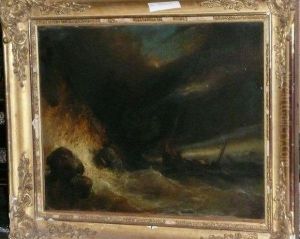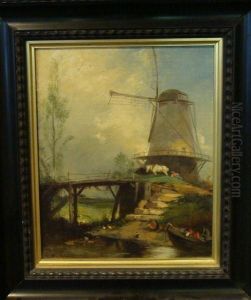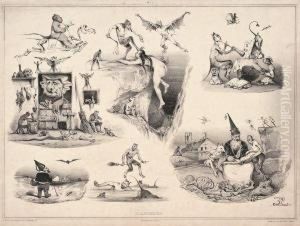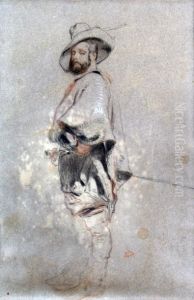Eugene Le Poitevin Paintings
Étienne Eugène Le Poitevin was a French painter, draftsman, and lithographer, known for his versatile subject matters, ranging from landscapes and seascapes to genre scenes and historical compositions. Born on July 31, 1806, in Paris, France, Le Poitevin developed his artistic talents at a young age. He studied under prominent artists such as Louis-Étienne Watelet and later Étienne Bouhot, which helped him refine his skills and establish a foundation in classical art techniques.
Le Poitevin exhibited at the Paris Salon for the first time in 1824, starting a long and successful career in the French art scene. His works received critical acclaim, and he was known for his ability to capture the subtle interplay of light and atmosphere, particularly in his seascapes and coastal scenes. These paintings often depicted the Normandy coast, where he spent much time and drew inspiration from the natural beauty of the sea and sky.
In addition to his landscapes, Le Poitevin also gained recognition for his historical and genre scenes. His attention to detail and historical accuracy was appreciated by the public and critics alike, which earned him commissions for book illustrations and lithographs. He contributed to a revival of interest in the Middle Ages and Renaissance periods through his depictions of historical costumes and settings.
Le Poitevin's contribution to art was not limited to his own creations. He was also a mentor to younger artists and played a significant role in the artistic community. He was awarded several honors throughout his career, including the Legion of Honour in 1843, which solidified his status as a respected artist of his time.
Eugène Le Poitevin died on August 6, 1870, in Sainte-Adresse, near Le Havre in Normandy. Although not as widely known today as some of his contemporaries, Le Poitevin's work remains an important part of the French Romantic movement and continues to be studied and appreciated for its artistic merit and historical significance.
